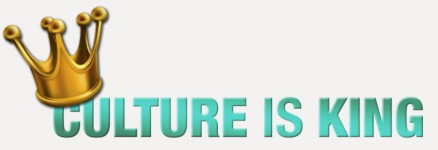In one of his famous quotes, Steve Jobs stated that when looking to innovate, one should start with the customer experience first and then work backwards to technology. While many business leaders would wholeheartedly agree with that strategy, getting it to actually work is becoming the ultimate challenge facing organizations these days. This challenge stems from the multiple business and human aspects an organization needs to get right in order to successfully grow in harmony in today’s dynamic business scene.
And that was indeed the key challenge I faced, going into the role of Business Transformation Head at Skype. To visualize the challenge I had, I often illustrate a set of puzzle pieces. Each piece represents a key element or business principle I had to address. Some pieces were already there, some pieces needed fine-tuning and some pieces were missing altogether. In order to complete the puzzle and create a coherent organization that works well together, I needed to ensure all pieces were present and positioned in the optimized place. The change required in this process included a balancing act. Between strategy and execution, between technology and business needs, between corporate control and innovation and others.
To get started, I needed to build a team that can exemplify the vision we had for the organization and be agile and adaptive, so when the inevitable changes in the organization, strategy or market arise, we could respond swiftly and calmly. No sooner than we started, the landscape had indeed started to shift. The acquisition and integration with Microsoft, a merged division with Lync, a functional reorg in Microsoft, the prolonged CEO search and multiple personnel moves had significant implications for us. Think about connecting those puzzle pieces while in a fighter jet doing constant loops in the air.
So how do you get it to work? Let’s look at the Strategy first.
Strategy starts with being able to be decisive and clear about the choices or bets your organization makes. Choices that have been adequately analyzed, modeled and their potential implications discussed. An important first step but not enough. The business scene is littered with the ruins of strategies that looked good on paper but failed the test of execution. To address this or VUCA, the acronym for volatility, uncertainty, complexity and ambiguity businesses are facing today, the strategy needs to be more agile and adaptive to enable the planning and execution phase to succeed.
With this mindset, the strategy can become more real to employees and can even be leveraged to promote agility and strengthen this capability in the organization. This encapsulates the evolution from learning to plan, to planning to learn as Rita Gunther McGrath, a Columbia Professor, states in her books. That approach helped us instill the idea of being able to change at a moment’s notice without losing the overall path of the strategy.
Now we can review the technology aspect.
Technology is what makes many people excited. Especially engineers. From what I’ve seen in my career, many engineers have a natural bias to talk first about technology. In many cases that becomes the essence of disruptive innovation. In other times, however, the customer sometimes gets left out and we end up with products, services and ecosystems that are not fully embraced and adopted by their intended end users. To help bridge that gap and strike the right balance we used Data. An essential element that caters both the technology and the business savvy of the group and that is abundantly available if properly curated.
Data helped us get closer to our user as with more than 300M customers worldwide, one of the primary ways for communication is via metrics, metrics that represent value to our users. The needle on the metric would indicate the customer satisfaction from our product and enable a fact based holistic view of the business. But data can go well beyond that. Properly defined metrics can enforce rigor in our employees to focus on value adding activities, it can provide context to everyone on how their work impacts the customer and the overall strategy of the firm, and with the right balance between risk and investment, it can actually promote a culture of innovation via experimentation metrics and trial and error activities.
This brings us to what essentially is the glue that makes everything stick. Culture.
Organizational culture is how we work and align as a business. What are the social and behavioral norms that are accepted in the organization and are predominantly present. Do people come to meetings on time? Is strategy being followed and understood by the employees? Is change embraced or unwelcome?
In short, culture can be illustrated by where your organization is placed on the different ranges of the tensions we have in the business. Is it completely entrepreneurial with no structure or adherence to an overall strategy? Do people take measurable risks for innovation or prefer to remain conservative and have a business as usual mentality?
To hit the right balances in the organization, to ensure that strategy and technology are symbiotic to one another, a mature culture is of an essence. The right culture can provide the supportive business infrastructure on which great ideas, great talent and great technology can excel in and on which the future success of the organization ultimately depends on.
To get there requires leadership, patience and conviction that the pieces of the puzzle will eventually connect in this journey and work together to create those products, services and ecosystems customers would love and pay for.


[…] Need Technology and Strategy to work together? Is Culture the answer? […]